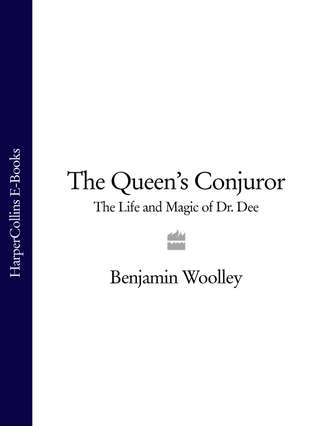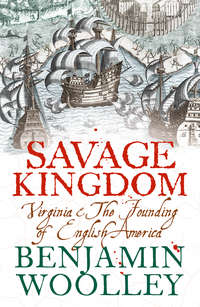
Полная версия
The Queen’s Conjuror: The Life and Magic of Dr. Dee
In 1672, Elias Ashmole, planning a biography of Dee which was never written, visited Mortlake to interview the village’s oldest inhabitant, eighty-year-old Goodwife Faldo, who was the last surviving link with the time Dee lived there.
Her memories were vivid. Dee was ‘very handsome’, tall and slender with a fair complexion, smartly dressed in an ‘artists’ gown’ with hanging sleeves, and sporting a long ‘picked’ (pointed) beard which in old age turned snowy white. Faldo recalled how children ran screaming from him because he was ‘accounted a conjuror’, how he would act as a ‘great Peacemaker’ among squabbling adults, and how neighbours would ask his advice on the most trifling domestic problems.
Faldo remembered an incident concerning a basket of pewter tableware that had been sent to London to be polished for a wedding. The job done, the basket was delivered to a prearranged spot on the banks of the Thames to be collected by the boatman Robert Bryan. But Bryan took the wrong basket, and the furious owner found his gleaming pewter substituted by beef tripe. By means that Faldo could not fathom, Dee directed the hapless boatman to a woman in nearby Wandsworth. It turned out the tripe was hers, and she told Bryan he would find the plate still sitting by the river, as she had found it too heavy to carry home.
This ambiguous image of the cunning wizard and wise seer was enhanced by Dee’s impressive connections with foreigners and powerful courtiers. Many such figures came through Mortlake, en route between the Queen’s palaces at Westminster, Greenwich, Richmond, Nonsuch and Hampton Court. Faldo recalled Dee frequently visiting nearby Barn Elms, the home of Sir Francis Walsingham and later the Earl of Essex, Queen Elizabeth’s most rebellious favourite and husband of Walsingham’s daughter Frances. Dee had also once taken Faldo and her mother to Richmond Palace, so they could watch a royal dinner with the King of Denmark.
At the age of just six, Faldo (and her mother) had been invited into Dee’s home, where in a darkened room he showed them the image of a solar eclipse projected through a pinhole.2 Despite the reactions of the village’s other children, Faldo seemed quite unafraid of entering Dee’s strange world of ancient manuscripts, intricate devices and chemical smells, walking into the labyrinthine corridors of what by then had become one of the most extraordinary residences in Europe.
Dee had moved to Mortlake out of necessity. Despite the Queen’s welcome on his return from the Continent in 1564, he found life in England far from convivial. The Marchioness of Northampton, whom he had escorted back from Antwerp, had secured the promise of the deanery of Gloucester when it fell vacant, as was imminently expected. It was just the sort of post he needed, promising to provide him with the secure and undemanding living he needed to continue his philosophical work. However, in April 1565, when the marchioness finally succumbed to breast cancer, so did his claim to the deanery. Such offices were entangled with growing antagonisms at court, the tensions between Robert Dudley (just made Earl of Leicester), the leader of the militant Protestant faction and the Duke of Norfolk, the nation’s most senior peer and focus of Catholic sympathies. Dee’s religious loyalties were not delineated clearly enough to arouse the support of either, so he was swept aside in favour of John Man, a radical Protestant who later became Bishop of Gloucester.
Dee did not help the situation by being so inept at cultivating aristocratic patrons. He attended court irregularly, and then only to see the Queen. Robert Dudley had known Dee when he was appointed to the household of his father the Duke of Northumberland in 1553, and would have been an excellent potential benefactor, yet Dee did not dedicate a single work to him. Rather, he eulogised Robert’s brother John, Earl of Warwick, in his Mathematicall Praeface, who had died in 1554.
He seemed to put as much effort into befriending Elizabeth’s servants as her courtiers, welcoming both her Italian dwarf, Tomasina and a ‘Mr Fosku’ of the Queen’s wardrobe to Mortlake.
His hopes that the Queen herself might offer him a post as court philosopher were wildly optimistic. There was certainly a demand for philosophical advice of all sorts: astrological, alchemical, theological, even medical. When a wax effigy of Elizabeth stuck with pig bristles was found under a tree in Lincoln’s Inn Fields; when a ‘blazing star’ appeared in the sky; when the Queen fell sick with a mysterious illness – it was Dee who was called upon to advise. Even on strategic matters, such as the maintenance of a navy or the management of trade, he could expect an eager audience. But whenever the court summoned him, it was as a diligent subject not a paid professional. Only the sophisticated and lavish households of Continental monarchs could afford professional court philosophers. In England, they were considered an unnecessary luxury. For there were Ladies-in-Waiting, Gentlemen-of-the-Wardrobe, even Grooms-of-the-Stool, but no masters of philosophy.
Конец ознакомительного фрагмента.
Текст предоставлен ООО «ЛитРес».
Прочитайте эту книгу целиком, купив полную легальную версию на ЛитРес.
Безопасно оплатить книгу можно банковской картой Visa, MasterCard, Maestro, со счета мобильного телефона, с платежного терминала, в салоне МТС или Связной, через PayPal, WebMoney, Яндекс.Деньги, QIWI Кошелек, бонусными картами или другим удобным Вам способом.




